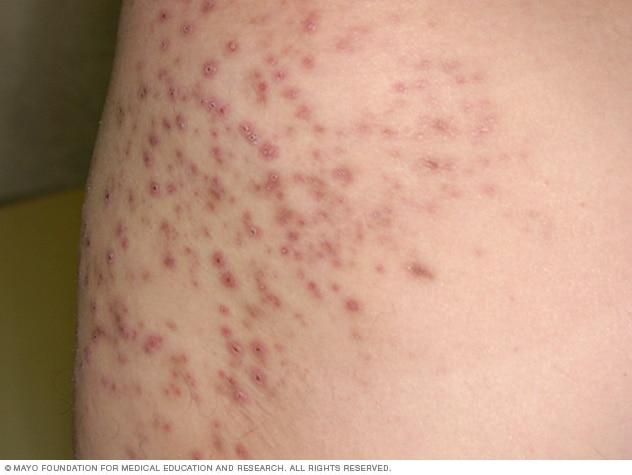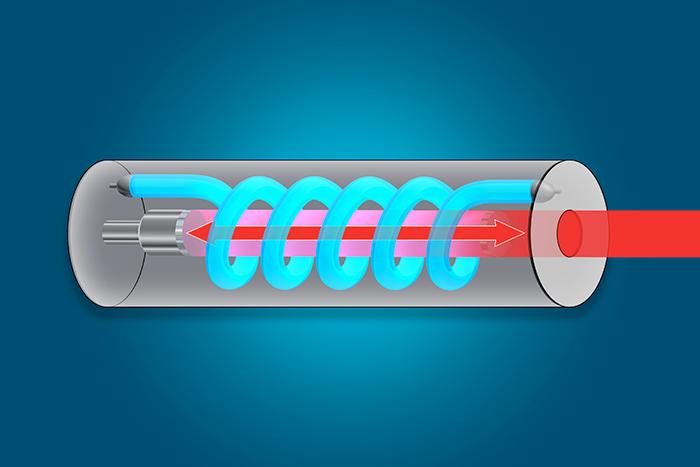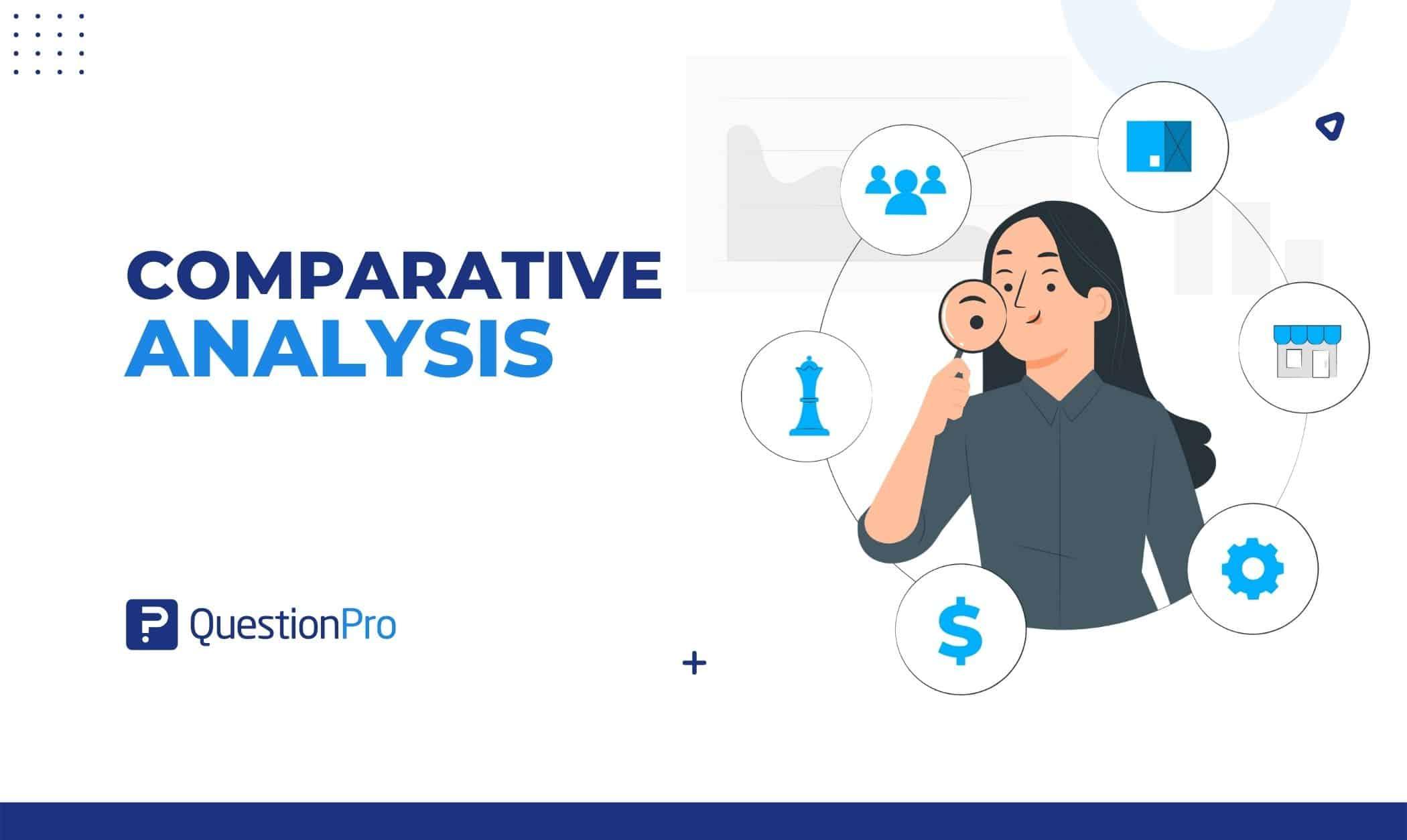In the vast panorama of aesthetic innovation, few procedures have garnered as much attention—and as many questions—as laser hair removal. Heralded as a gateway to perpetually smooth skin, this cosmetic marvel has revolutionized beauty routines worldwide. Yet, beneath its façade of simplicity lies a complex interplay of science and dermatology that extends far beyond the initial promise of silky, hair-free surfaces. At the heart of this process dwells a lesser-known phenomenon: folliculitis. In this exploration, we peel back the layers to uncover the hidden mechanisms at play, revealing how laser hair removal interacts with our skin in ways both profound and unexpected. Join us as we delve into the enigmatic world of follicles and lasers, and discover the secrets that lie beneath the surface.
Understanding Folliculitis: The Basics and Beyond
Folliculitis often masquerades as a series of irritating, red bumps, but beneath the surface, there’s a deeper story to tell. At its core, it’s an inflammation of the hair follicles caused by bacteria, fungi, or even physical irritation. While seemingly minor, untreated folliculitis can lead to more severe conditions like boils or abscesses. Understanding the roots of this condition is the first step toward addressing it effectively and preventing further discomfort.
<p>
Causes of Folliculitis:
<ul>
<li><b>Microorganisms:</b> Bacteria such as Staphylococcus aureus, fungi, and viruses can invade the hair follicles.</li>
<li><b>Physical Irritation:</b> Friction from tight clothing or shaving can damage the follicles.</li>
<li><b>Immune Response:</b> Underlying conditions like diabetes or weakened immune systems can exacerbate the issue.</li>
</ul>
These factors highlight the diverse nature of folliculitis, making tailored treatment approaches essential.
</p>
<p>
In the context of laser hair removal, the story takes an exciting twist. Laser hair removal targets hair follicles with concentrated light beams, significantly reducing the growth and density of hair over time. This controlled damage can inadvertently offer relief from chronic folliculitis by minimizing the frequency and severity of infections caused by traditional hair removal methods like shaving or waxing.
</p>
<p>
Myths vs. Facts about Laser Hair Removal and Folliculitis:
<table class="wp-table">
<thead>
<tr>
<th>Myth</th>
<th>Fact</th>
</tr>
</thead>
<tbody>
<tr>
<td>Laser hair removal is too painful for those with folliculitis.</td>
<td>Modern lasers are designed to be minimally painful, with cooling systems to mitigate discomfort.</td>
</tr>
<tr>
<td>Laser treatment can worsen folliculitis.</td>
<td>The controlled laser pulses actually reduce incidences by preventing hair growth that can trap bacteria.</td>
</tr>
</tbody>
</table>
Understanding these nuances can demystify laser hair removal's hidden mechanism as a potential ally in managing folliculitis, offering an innovative pathway to smoother, healthier skin.
</p>
Exploring the Science Behind Laser Hair Removal
Delving into the enigmatic world of laser hair removal reveals a fascinating interplay of biology and technology. The procedure primarily targets the hair follicles, which are small, complex organs responsible for hair growth. As the laser emits a concentrated beam of light, it penetrates the skin and is absorbed by the pigment melanin in the follicles. The absorbed light energy converts into heat, effectively damaging the follicle to impede future hair growth without harming the surrounding skin. This precision and efficiency are pivotal, but what truly fuels the success of laser hair removal is its adaptability to different skin and hair types.
One of the marvels behind this mechanism is the laser’s selective targeting, often described as selective photothermolysis. This principle allows the laser to zero in on darker hair against lighter skin with remarkable accuracy, reducing the likelihood of skin damage. Advances in technology have broadened this capability, accommodating a wider spectrum of skin tones and hair colors. Here are the key elements that make this possible:
- Wavelength: Different lasers employ various wavelengths to cater to specific skin and hair types.
- Pulse Duration: The timing of laser pulses varies to optimize heat delivery to the follicle.
- Cooling Mechanisms: Integrated cooling devices protect the skin and enhance comfort during treatment.
This scientific approach extends further into understanding folliculitis, a common condition where hair follicles become inflamed, often due to bacterial or fungal infections. Laser hair removal plays a dual role here, not just in hair reduction but also in preventing folliculitis. By deactivating the hair follicles, the laser minimizes sites where infections can thrive, offering relief and prevention for individuals prone to this condition. It opens up possibilities not just in cosmetics but in therapeutic applications as well.
| Factors | Impact |
|---|---|
| Melanin Absorption | Targets dark hair effectively |
| Cooling Devices | Enhance comfort and protection |
| Pulse Duration | Adjusts heat delivery |
The evolution of laser hair removal technology is not merely a tale of aesthetic enhancement but a testament to human ingenuity in solving age-old dermatological issues. Combining the precision of medical lasers with the nuanced understanding of skin biology, this method transforms hair removal into a scientifically backed, versatile solution. For individuals battling folliculitis, this innovation brings a hidden benefit, adding another feather in the cap of modern dermatological practices.

Pinpointing the Mechanism: How Lasers Combat Folliculitis
Lasers offer a cutting-edge approach in the fight against folliculitis by targeting the root cause beneath the skin’s surface. The essence of the mechanism lies in the laser’s ability to emit a concentrated beam of light that penetrates the hair follicle. This light energy is selectively absorbed by the pigment within the follicle, specifically the melanin. By doing so, the energy impairs the hair follicle’s ability to grow, which helps in reducing or eliminating the risk of inflammation and bacterial growth often associated with folliculitis.
The process unfolds in key phases, marked by precision and targeted action:
- Identification: Lasers zero in on individual hair follicles, discerning between healthy tissue and potential problem areas.
- Absorption: Pigments in the hair follicle absorb the laser light, converting it to heat.
- Impairment: Heat damages the follicle’s growth ability without harming the surrounding skin.
- Healing: The impaired follicles reduce bacterial habitation, ultimately lowering the chances of inflammation.
But why precisely does this process succeed where other treatments falter? The answer lies in the laser’s dual capability of accuracy and deep tissue reach. While creams and antibiotics deal with folliculitis symptoms, they don’t address the root cause, leading to recurrence. Laser technology goes straight to the source by not just targeting the visible hair but also rendering the follicle itself less hospitable to the bacteria that cause folliculitis. This integrated, multifaceted approach results in more consistent and long-lasting alleviation of the condition.
Adding to the sophisticated application of lasers is the compatibility with different skin types and hair colors. Advanced laser technologies have evolved to distinguish and treat varying melanin concentrations effectively. Here’s a brief comparison of effectiveness across different hair types:
| Hair Type | Laser Compatibility |
|---|---|
| Dark, Coarse Hair | Highly Effective |
| Light, Fine Hair | Moderately Effective |
| Blonde or Red Hair | Less Effective |
This compatibility ensures personalized treatment plans can be developed, enhancing the overall effectiveness and user satisfaction. By considering the unique characteristics of each individual’s hair, laser therapy stands as a versatile and potent solution to the persistent problem of folliculitis.

Comparative Analysis: Traditional Methods vs Laser Intervention
The battle against folliculitis has historically employed a range of traditional methods. These include topical treatments like antibiotics and antifungal creams, as well as oral medications. Physical modalities such as warm compresses and antiseptic washes are also commonplace. While these methods can be effective, they often require consistent and long-term usage, sometimes leading to side effects or recurrence.
| Traditional Methods | Pros | Cons |
|---|---|---|
| Topical Antibiotics | Immediate Relief | Potential Resistance |
| Oral Medications | Systemic Treatment | Side Effects |
| Warm Compresses | Non-Invasive | Time-Consuming |
Laser hair removal, on the other hand, offers a revolutionary approach to managing and preventing folliculitis. Using focused laser beams, this method targets and destroys hair follicles, thereby reducing hair growth and mitigating the risk of inflamed follicles. Laser treatment is generally quicker than traditional methods, often requiring fewer sessions for long-lasting results. Its precision ensures minimal damage to surrounding skin tissue.
Key Benefits of Laser Hair Removal:
- Long-term Solution: Unlike temporary measures, laser treatment offers a permanent reduction in hair growth, thereby reducing the recurrence of folliculitis.
- Minimal Side Effects: Modern laser technology has evolved to ensure fewer side effects compared to the chemicals and medications used in traditional treatments.
- Increased Efficiency: Treatment sessions are relatively short, making it easier for individuals to fit into their busy schedules.
In comparative analysis, while traditional methods have their place and efficacy, they fall short in offering a long-term solution. Laser hair removal shines as a more efficient, long-lasting intervention with the added comfort of minimal side effects. However, it is essential to consider individual skin types and medical history before opting for any treatment.

Expert Recommendations: Best Practices for Effective Treatment
To ensure effective treatment for folliculitis associated with laser hair removal, experts emphasize a combination of meticulous techniques, aftercare regimens, and professional consultations. Incorporating these best practices can help minimize risks and enhance the overall treatment experience, leading to smoother, healthier skin.
- Pre-Treatment Preparation: Proper skin assessment is essential before embarking on laser hair removal. Professionals recommend a comprehensive evaluation of skin type, hair type, and medical history to personalize treatment plans and select suitable laser settings.
- Skin Cleansing: Ensure the skin is thoroughly cleansed on the day of the procedure to remove any oils, lotions, or impurities that may interfere with the laser’s effectiveness. Use gentle, non-comedogenic cleansers to avoid irritation.
- Patch Testing: Conducting a patch test on a small area of skin can help identify any adverse reactions or sensitivities, allowing for adjustments in laser intensity or technique before proceeding with the full treatment.
Post-treatment care is crucial for preventing folliculitis flare-ups and promoting skin recovery. Experts suggest a multifaceted approach that includes:
- Cooling and Hydration: Apply cold compresses or hydrating gels immediately after treatment to soothe the skin and reduce inflammation.
- Avoiding Irritants: Steer clear of activities that may irritate the skin, such as heavy exercise, hot showers, or prolonged sun exposure, for at least 48 hours post-treatment.
- Topical Treatments: Use antibiotic ointments or cortisone creams as directed by your dermatologist to prevent secondary infections and manage discomfort.
Regular follow-up appointments and ongoing skin care are vital for maintaining results and addressing any long-term skin concerns. Establishing a routine with the following elements can support sustained success:
| Action | Recommendations |
|---|---|
| Exfoliation | Mild exfoliation once a week to prevent clogged pores and ingrown hairs |
| Moisturization | Daily use of non-comedogenic moisturizer to maintain skin barrier |
| Consultations | Quarterly check-ins with a dermatologist to monitor skin health and adjust treatments |
Combining these expert-recommended practices can transform the laser hair removal experience, addressing and mitigating the risk of folliculitis while achieving desired aesthetic results.
Q&A
Q&A: Unveiling Folliculitis: Laser Hair Removal’s Hidden Mechanism
Q1: What is folliculitis, and why is it a concern for those undergoing laser hair removal?
A1: Folliculitis is an inflammation of the hair follicles, often resulting in red, tender bumps on the skin. It can be caused by bacterial or fungal infections, but sometimes it’s simply a result of irritation. For those opting for laser hair removal, folliculitis is a concern because the procedure targets hair follicles, which can occasionally lead to inflammation.
Q2: How does laser hair removal work, and what is its primary aim?
A2: Laser hair removal works by directing concentrated light beams towards the pigment in hair follicles. These light beams convert to heat, which damages the follicle, inhibiting or delaying future hair growth. The primary aim is to reduce unwanted hair in targeted areas for smoother skin with long-lasting results.
Q3: What is the hidden mechanism of laser hair removal that relates to folliculitis?
A3: The hidden mechanism of laser hair removal that relates to folliculitis is its potential to either trigger or alleviate the condition. While the heat generated by lasers can sometimes irritate hair follicles and cause folliculitis, it can also eliminate the hair that causes recurrent follicle infections. Thus, in some cases, laser hair removal can ultimately reduce the frequency of folliculitis flare-ups.
Q4: Can individuals with a history of folliculitis safely undergo laser hair removal?
A4: Yes, individuals with a history of folliculitis can often safely undergo laser hair removal, but it requires careful consideration. A consultation with a dermatologist or a licensed technician is essential. They can assess skin type, hair type, and the severity of folliculitis to formulate a personalized treatment plan that minimizes risks.
Q5: What precautions should be taken before and after laser hair removal to prevent folliculitis?
A5: To prevent folliculitis, it’s crucial to follow pre- and post-treatment care guidelines. Before the procedure, avoid sun exposure, waxing, or plucking hairs in the targeted area. After the treatment, keep the skin clean and apply recommended soothing products. Avoid heavy exercise, hot showers, and tight clothing to reduce irritation. Keeping the skin cool and hydrated can help prevent folliculitis from developing.
Q6: Are there specific skin types more prone to developing folliculitis from laser hair removal?
A6: Yes, individuals with sensitive skin or those prone to ingrown hairs may be more susceptible to developing folliculitis post-laser hair removal. Understanding skin type and hair characteristics through professional evaluation can help mitigate this risk. Customized settings on the laser device tailored to individual needs can enhance treatment safety and effectiveness.
Q7: How can one tell if they are experiencing folliculitis or a normal reaction to laser hair removal?
A7: Post-laser hair removal, it’s common to experience mild redness and swelling, which usually subsides within a few hours to a couple of days. Folliculitis, however, appears as persistent red, pus-filled bumps that can be tender or itchy. If such symptoms occur, it’s advisable to consult a dermatologist for proper diagnosis and treatment.
Q8: Is there a definitive cure for folliculitis induced by laser hair removal?
A8: While there is no definitive cure for folliculitis induced by laser hair removal, the condition is typically manageable with appropriate treatment. Topical or oral antibiotics, antifungal medications, and anti-inflammatory creams can help resolve the inflammation. Continuous proper skin care and adhering to preventive measures can reduce recurrence.
Q9: Can laser hair removal ultimately benefit individuals with chronic folliculitis?
A9: Yes, laser hair removal can be beneficial for individuals with chronic folliculitis. By permanently reducing hair growth in problematic areas, it removes a primary cause of recurrent follicle infection, potentially offering long-term relief from chronic folliculitis.
Q10: What does the future hold for laser hair removal technology in addressing folliculitis?
A10: The future of laser hair removal technology looks promising in addressing folliculitis. Advancements are continuously being made to develop lasers with more precise targeting capabilities and adjustable settings for different skin types and conditions. This evolution aims to maximize the benefits of hair removal while minimizing side effects like folliculitis, leading to more personalized and effective treatment options.
To Wrap It Up
As the veil is lifted on the mysteries of folliculitis and the subtle artistry of laser hair removal, we find ourselves standing at the intersection of science and beauty. No longer just a cosmetic luxury, this procedure emerges as a meticulous sculptor of our skin’s health, mitigating the persistent plight of folliculitis with every pulse of laser light. The hidden mechanism intricately dances within the depths of our follicles, marrying innovation with elegance. As we step away from this exploration, we are reminded that beneath the surface, lies a sphere where precision redefines wellness. In understanding, we uncover not just the secret, but a new horizon for skin vitality. With this newfound clarity, may we navigate our choices with enlightened care, ushering in an era where science serves both our beauty and well-being harmoniously.






